The Nikon D810 has no anti-aliasing (AA) filter. The D800E has a tricky now-you-see-it-now-you-don’t (non-AA?) filter. Is there any difference in the sharpness of the two cameras? How about aliasing and sensitivity to moire?
I mounted a Sigma 50mm f/1.4 FG lens on the 810. I set up an ISO 12233 target. so that the vertical extent was 400 pixels. I lit the target with a Paul Buff Einstein electronic flash set to a little over 4 watt-seconds, yielding a flash duration of about 200 microsesonds. I put the camera on an Arca Swiss Cube using a RRS L bracket. I mounted the head to a set of stiff RRS carbon fiber legs. I set the shutter delay to 3 seconds and the ISO to 64. I focused wide open, using live view, then stopped the lens down to f/5.6. I connected a synch cable to the PC connector on the camera. I made three exposures.
I opened the lens up, refocused, stopped down, and made three more exposures. Then I did that all over again, for a total of nine images.
I mounted the lens on a D800E, set the ISO to 100, turned the strobe down to 2.5 watt-seconds, and repeated the protocol, giving me nine more images.
I updated Lightroom to 5.6, and ACR to 8.6. Now I don’t need to use the Adobe DNG converter. I cropped to the chart in Lr, and exported all 18 images as layers to Ps.
All the D810 images looked about the same. There was some variation in the D800E images due to inconsistent focusing with the D800E’s brain-dead live view. I picked what looked like the best D800E image (all three in the set with the same focus were really close), and picked an D810 image at random.
Here’s the whole chart:
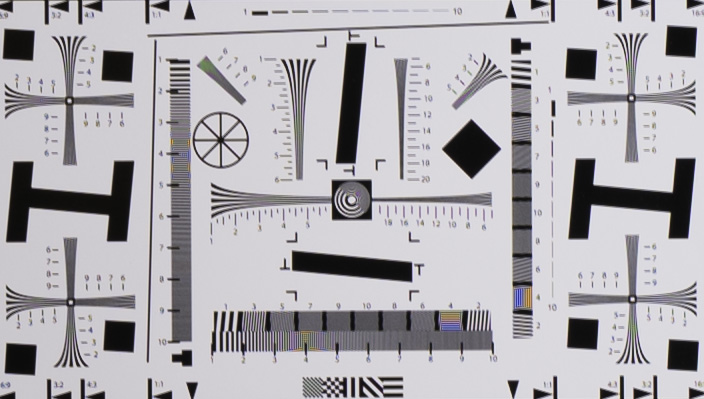
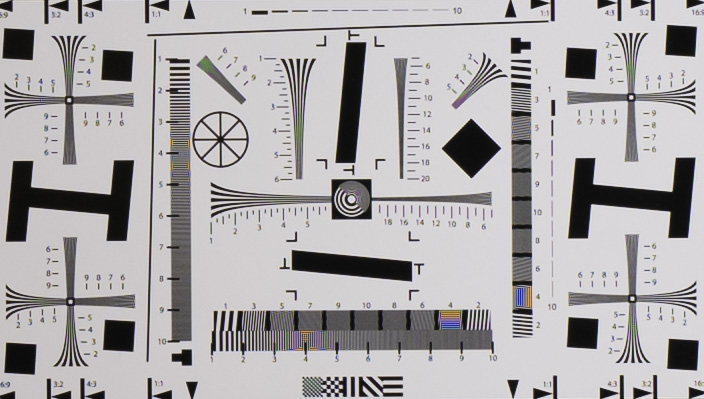
There’s not a lot to choose between the two.
Let’s take a closer look at the rosette on the upper left:
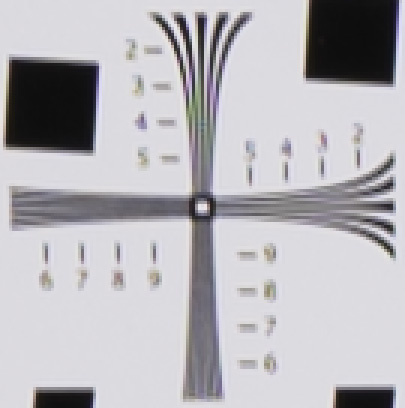
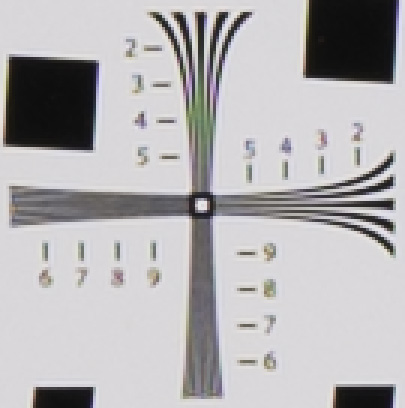
The bars opposite the number “4” are at the Nyquist frequency. Tighter bars are aliased. In both images, you can see aliasing up to “8” which is the sampling frequency. This is textbook performance, except that the D800E image is a little snappier for the horizontal lines. That could easily be due to sub-pixel shifts at capture time.
Some people have said that the D810 has more false color than the D800E. Let’s look at the area of the chart with the worst false color artifacts:
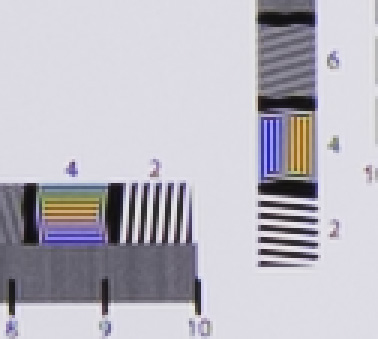
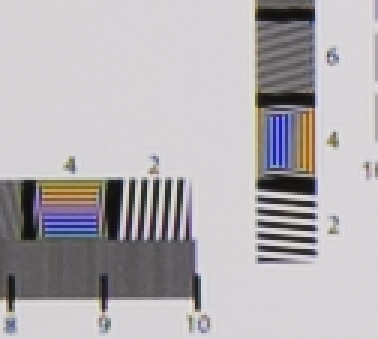
There’s not a lot to choose between the two images. Note that both cameras are showing aliasing to the right of the “8” in the lower left corner of the image. That bar marks the 1 sample/cycle point, so the aliasing indicates capture — albeit wrongly reproduced — of target information with spatial frequency greater than twice the Nyquist frequency. This indicates the potential of this lens to work well with a sensor of less than half the pixel pitch of the D8x0 sensor. 200 megapixel cameras? Bring ’em on.
The ISO 12233 target is much more discriminating than a normal photographic subject. I think the new camera’s resolution, sharpness, and susceptibility to artifacts is essentially the same as the old one, under perfect conditions.
Under not-so-perfect conditions, the improved LV and lower vibration susceptibility of the D810 will make a difference.
Leave a Reply